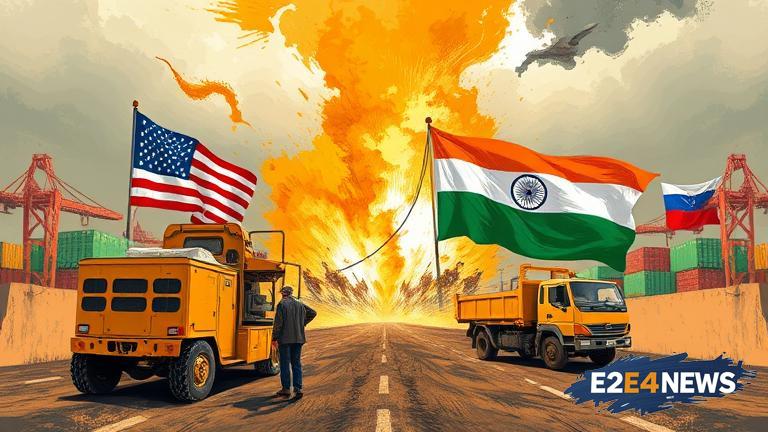The United States is planning to impose higher tariffs on India, a move that is expected to have significant implications for the trade relationship between the two countries. This decision comes after India’s continued support for Russia, despite international pressure to condemn the country’s actions. Former President Donald Trump recently stated that the US would be taking this step, citing India’s refusal to distance itself from Russia as the primary reason. The tariffs are expected to affect a wide range of Indian goods, including textiles, pharmaceuticals, and steel. The move is seen as a way for the US to pressure India into reevaluating its relationship with Russia and to encourage the country to take a stronger stance against Russian aggression. India has been a key player in the international community’s response to the Russian conflict, and its support for Russia has been a point of contention with the US and other Western nations. The US has been trying to build a coalition of countries to counter Russian influence, and India’s support for Russia has been seen as a hindrance to this effort. The tariffs are expected to have a significant impact on the Indian economy, which is already facing challenges due to the COVID-19 pandemic and other global economic trends. The Indian government has been trying to diversify its trade relationships and reduce its dependence on the US, but the tariffs are likely to make this more difficult. The US is one of India’s largest trading partners, and the tariffs will likely lead to higher prices for Indian goods in the US market. This could make it more difficult for Indian companies to compete with other countries, and could lead to job losses and economic instability in India. The Indian government has been critical of the US decision, saying that it is unfair and will harm the country’s economy. The government has also stated that it will take all necessary steps to protect the interests of Indian businesses and workers. The US decision has also been criticized by other countries, including China, which has accused the US of using tariffs as a tool of economic coercion. The move is seen as part of a larger trend of increasing protectionism and trade tensions between the US and other countries. The US has been imposing tariffs on a wide range of countries, including China, Mexico, and Canada, in an effort to protect its domestic industries and reduce its trade deficit. The tariffs have been controversial, with some arguing that they are necessary to protect American jobs and industries, while others argue that they will lead to higher prices and economic instability. The situation is being closely watched by the international community, which is concerned about the potential impact on global trade and economic stability. The US and India have a long-standing trade relationship, and the tariffs are likely to have significant implications for the future of this relationship. The two countries have been working to strengthen their trade ties in recent years, but the tariffs are likely to create new challenges and tensions. The Indian government has been trying to negotiate a trade deal with the US, but the tariffs are likely to make this more difficult. The US decision has also been seen as a reflection of the growing tensions between the US and India, which have been exacerbated by issues such as trade, security, and immigration. The two countries have a complex and multifaceted relationship, and the tariffs are likely to add to the challenges and tensions that already exist. Despite the challenges, the US and India have a strong and enduring relationship, and the two countries are likely to continue to work together on a wide range of issues, including trade, security, and counter-terrorism. The tariffs are expected to be imposed in the coming months, and the Indian government is likely to take all necessary steps to mitigate their impact. The situation is being closely watched by the international community, which is concerned about the potential impact on global trade and economic stability.





